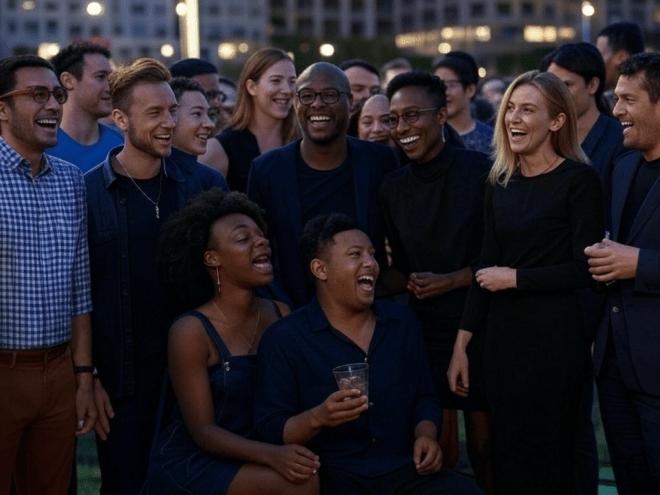
Abstract
Multiculturalism has become a defining characteristic of contemporary Australia, shaping its cultural, economic, and social landscapes. With over 26% of its population born overseas and a significant portion of the populace identifying with diverse ethnic backgrounds, Australia stands as a global exemplar of integration and coexistence. However, the rise of divisive political rhetoric poses a threat to this multicultural identity. This paper explores the strengths that multiculturalism brings to Australia while also addressing the challenges posed by political figures who exploit divisions for personal gain. By examining historical context, cultural contributions, economic impacts, and social cohesion, this research aims to provide a balanced perspective on the complexities of multiculturalism in Australia.
Introduction
Australia is often heralded as a model of multiculturalism, a nation where diversity is not merely tolerated but celebrated. The formalisation of multicultural policies in the 1970s under leaders such as Gough Whitlam and Malcolm Fraser marked a significant shift from a predominantly Anglo-Celtic society to one characterised by a rich tapestry of cultures. This transformation has had profound implications for Australia’s cultural vitality, economic dynamism, and social resilience. However, the ongoing political climate raises concerns about the potential for division and discord among various ethnic and religious groups. This paper seeks to explore both the strengths and challenges of multiculturalism in Australia, emphasising the importance of unity in a diverse society.
The Cultural Strength of Multiculturalism
Richness of Cultural Contributions
Australia’s multicultural identity infuses the nation with cultural richness that transcends its colonial roots. The contributions of migrant communities have reshaped various aspects of Australian life, from cuisine to arts. Italian espresso culture, Vietnamese pho, Lebanese festivals, and Indian Bollywood influences have become integral to the Australian experience. Events such as Sydney’s Vivid Festival and Melbourne’s Comedy Festival celebrate this blend of cultures, drawing international acclaim and fostering a shared national identity.
Moreover, Indigenous cultures are increasingly recognised and celebrated within this multicultural framework. Initiatives such as NAIDOC Week aim to amplify Indigenous voices and promote reconciliation, reflecting a growing awareness of the importance of inclusivity in the narrative of Australian identity.
Economic Contributions
Economically, multiculturalism serves as a powerhouse for Australia. Diverse workforces contribute varied skills and perspectives, fostering innovation across sectors such as technology, agriculture, and healthcare. Historical examples, such as the Snowy Mountains Scheme, illustrate how migrants have played a pivotal role in building Australia’s postwar economy. According to the 2021 Australian Bureau of Statistics, migrant-owned businesses contribute billions to the economy, and diaspora networks link Australia to global markets, particularly in Asia. This economic edge positions Australia as a competitive player in an interconnected world.
Social Cohesion and Resilience
Socially, multiculturalism fosters resilience within communities. Daily interactions among diverse groups cultivate empathy and adaptability, qualities that are often lacking in more homogenous societies. The Scanlon Foundation’s 2021 Mapping Social Cohesion survey indicates that 83% of Australians view multiculturalism positively, suggesting a broad consensus that diversity strengthens rather than divides. This social capital proved vital during crises such as the COVID-19 pandemic, where multilingual communities bridged gaps in communication and facilitated mutual aid.
The Rise of Divisive Political Rhetoric
Pauline Hanson and the “Asian Invasion”
Despite the strengths of multiculturalism, the political landscape has witnessed the emergence of figures who leverage fear and insecurity for political gain. Pauline Hanson, leader of One Nation, epitomises this trend. In the 1990s, Hanson capitalised on fears surrounding immigration, famously coining the term “Asian invasion.” Her rhetoric resonated with segments of the population who felt threatened by the increasing visibility of Asian immigrants in Australian society.
Hanson’s rhetoric was not merely an expression of personal belief; it tapped into broader societal anxieties about economic competition and cultural change. Research by Markus (2001) indicates that during this period, many Australians perceived immigration as a threat to their way of life, a sentiment that Hanson effectively exploited for electoral success.
Targeting Muslim Australians
Following the events of September 11, 2001, and subsequent terrorist attacks, the focus of divisive rhetoric shifted towards Muslim Australians. Politicians like Hanson and others in her party have perpetuated stereotypes that associate Islam with extremism and violence. This has contributed to a climate of fear and suspicion, leading to increased discrimination and social isolation for Muslim communities (Niemann et al., 2014).
The Australian Human Rights Commission (2015) reported a significant rise in incidents of racial and religious discrimination against Muslims, exacerbated by the negative portrayal of Islam in political discourse. Such tactics not only fracture social cohesion but also undermine the foundational principles of multiculturalism.
The Cronulla Riots: A Case Study in Political Division
Background and Events
The Cronulla riots of December 2005 serve as a poignant example of the destructive potential of political division. What began as a rally against alleged assaults on lifeguards by individuals of Middle Eastern descent escalated into widespread violence and racial tensions between Anglo-Australian and Lebanese communities. Political leaders and media coverage inflamed tensions, with rhetoric framing the conflict in terms of “us versus them.”
Consequences and Reflections
The aftermath of the riots revealed deep-seated divisions within Australian society, highlighting the dangers of political rhetoric that pits communities against one another. The events led to increased police presence and heightened security measures in the area, reflecting the broader societal implications of such divisions (Hage, 2006).
Moreover, the riots sparked a national conversation about race relations in Australia, prompting calls for greater understanding and reconciliation among different cultural groups. However, the legacy of the riots continues to be felt, as political figures have, at times, reverted to fear-based tactics to galvanise support.
Economic and Social Consequences of Division
The divisive rhetoric undermines Australia’s social contract, eroding trust among communities. In a nation where 29% of people speak a language other than English at home, unity relies on mutual acceptance rather than exclusion. Politicians who foment division risk deterring investment, disrupting workforce harmony, and tarnishing Australia’s reputation as a welcoming destination for talent and trade.
Furthermore, the reality of Australia’s multicultural society is irrefutable. The 2022 census revealed over 300 reported ancestries, with migration continuing to shape both urban and rural landscapes. Politicians who cling to outdated notions of homogeneity do so at their peril, as the public’s embrace of diversity suggests that exclusionary tactics lead to irrelevance.
The Path Forward: Embracing Unity
To harness the benefits of multiculturalism while mitigating its challenges, several policy recommendations can be made:
- Promote Inclusive Education: Educational programs that emphasise the value of diversity and intercultural understanding can foster respect and tolerance among young Australians.
- Support Economic Opportunities: Initiatives that target disadvantaged immigrant communities, such as job training and mentorship programs, can help bridge economic gaps and promote integration.
- Encourage Community Engagement: Government and non-government organisations should promote community engagement initiatives that bring together individuals from different cultural backgrounds to foster understanding and cooperation.
- Combat Discrimination: Strong anti-discrimination laws and policies must be enforced to protect individuals from racism and xenophobia, ensuring that all Australians feel valued and included.
Conclusion
Multiculturalism stands as a cornerstone of modern Australia, reflecting a nation that has evolved beyond its colonial origins into a dynamic, inclusive society. The cultural, economic, and social strengths derived from diversity are profound, yet they are threatened by divisive political rhetoric. The challenge for Australia lies in navigating these complexities, recognising that unity in diversity is not only possible but essential for the nation’s continued success. Acceptance is the only viable path forward; those who reject it may find themselves sidelined in a society that values inclusivity and cooperation. Ultimately, the future of Australia belongs to those who champion unity over division, recognising that diversity is a foundation upon which to build a prosperous and harmonious society.
References
• Australian Human Rights Commission. (2015). Freedom from Discrimination: A Report on Racial and Religious Discrimination in Australia.
• Hage, G. (2006). A Not So Multi-Cultural Australia: The Cronulla Riots and the Politics of Race. In Racial Politics in Australia.
• Markus, A. (2001). Race: A History of the Australian Debate. In The Australian National University Press.
• Niemann, Y. F., et al. (2014). Islamophobia in Australia: The Role of Political Rhetoric. In Journal of Intercultural Studies.
• Productivity Commission. (2016). Economic Impacts of Migration and Population Growth.


